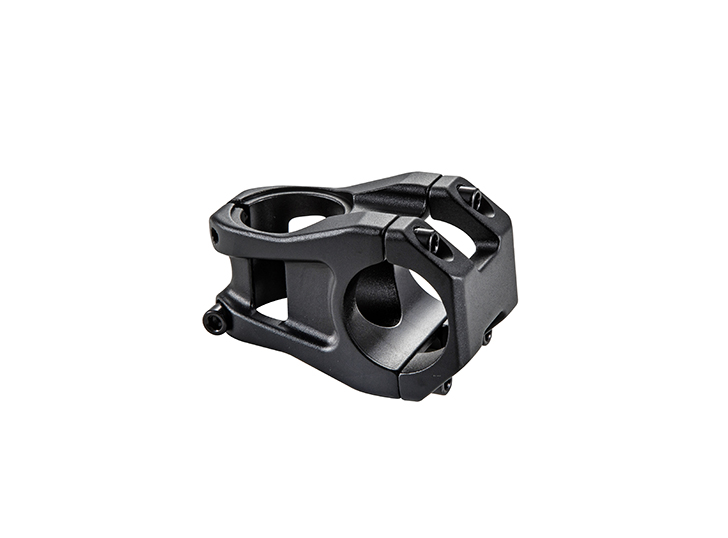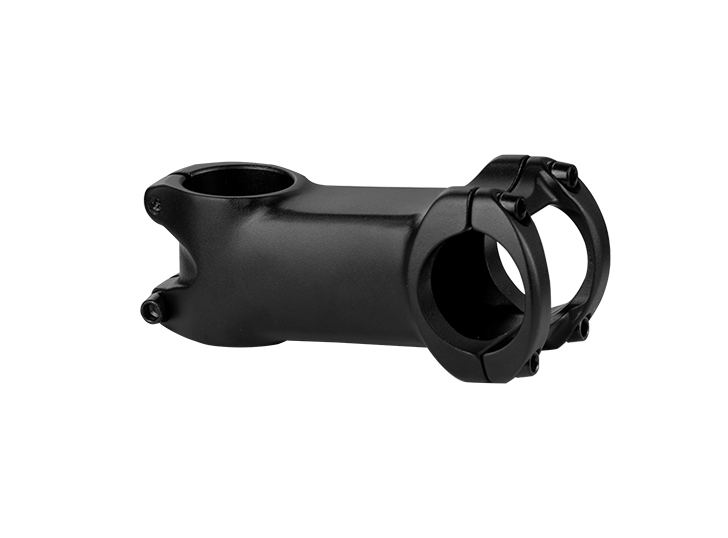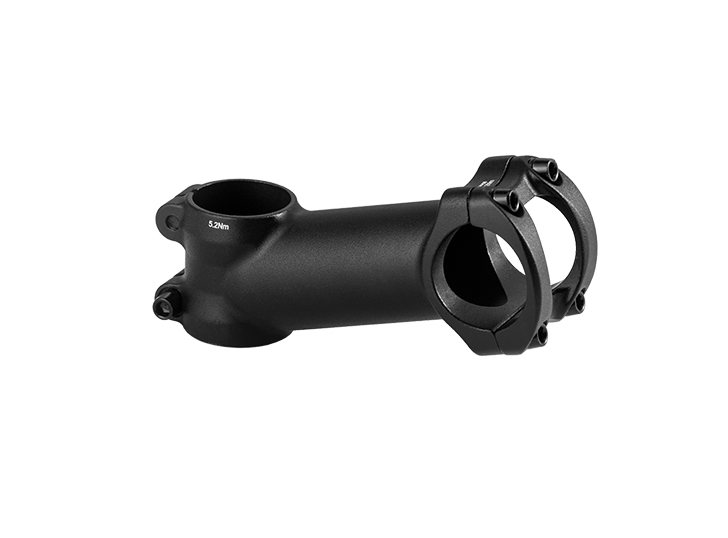STEM SPORT MTB SERIES
SPORT MTB is a type of bicycle suitable for mountain and off-road environments. They typically have robust frames and suspension systems, equipped with thicker tires and adequate obstacle handling capabilities to handle uneven and rugged terrain. In addition, SPORT MTBs usually emphasize performance and efficiency, equipped with lightweight frames and suspension systems to provide higher riding efficiency and maneuverability. Users can choose different subtypes such as XC, AM, FR, DH, TRAIL, and END according to their riding needs and preferences. Overall, SPORT MTB is a versatile bicycle suitable for various mountain and off-road riding environments, emphasizing performance and efficiency, with diverse choices that can meet different riding needs and preferences.
SAFORT adopts a full forging process on the stem of SPORT MTB, using Alloy 6061 T6 for manufacturing, and the handlebar hole diameter is usually 31.8mm or 35mm, with a few models using 25.4mm stem. The larger diameter stem can provide better rigidity and stability, suitable for intense riding styles.
MTB STEM
- AD-MT8230
- MATERIAL Alloy 6061 T6
- PROCESS CNC Machined
- STEERER 28.6 mm
- EXTENSION 55 / 75 mm
- BARBORE 31.8 mm
- ANGLE 10 °
- HEIGHT 42 mm
- WEIGHT 185 g (Ext:55mm)


AD-MT8767
- MATERIAL Alloy 6061 T6
- PROCESS CNC Machined
- STEERER 28.6 mm
- EXTENSION 40 mm
- BARBORE 31.8 / 35.0 mm
- ANGLE 0 °
- HEIGHT 40 mm
- WEIGHT 136 g (31.8mm)


AD-MT8718
- MATERIAL Alloy 6061 T6
- PROCESS Forged W / CNC
- STEERER 28.6 mm
- EXTENSION 35 mm
- BARBORE 31.8 / 35.0 mm
- ANGLE 0 °
- HEIGHT 40 mm
- WEIGHT 119 g


MTB
- AD-MT8300
- MATERIAL Alloy 6061 T6
- PROCESS CNC Machined
- STEERER 28.6 mm
- EXTENSION 35 / 45 mm
- BARBORE 31.8 / 35.0 mm
- ANGLE0 °
- HEIGHT 40 mm
- WEIGHT 226 g (Ext:45mm)


AD-MT8769
- MATERIAL Alloy 6061 T6
- PROCESSForged
- STEERER 28.6 mm
- EXTENSION40 mm
- BARBORE 31.8 mm
- ANGLE0 °
- HEIGHT 35 mm
- WEIGHT 145 g


AD-MT8727
- MATERIAL Alloy 6061 T6
- PROCESSForged
- STEERER28.6 mm
- EXTENSION 50 mm
- BARBORE 31.8 mm
- ANGLE0 °
- HEIGHT 35 mm
- WEIGHT 223 g


MTB
- AD-DA408-8
- MATERIAL Alloy 6061 T6
- PROCESS Forged
- STEERER28.6 mm
- EXTENSION50 mm
- BARBORE 31.8 mm
- ANGLE 30 °
- HEIGHT35 mm
- WEIGHT 229 g


AD-MT2100
- MATERIAL Alloy 6061 T6
- PROCESS 3D Forged
- STEERER 28.6 mm
- EXTENSION 60 / 80 / 90 mm
- BARBORE 31.8 mm
- ANGLE ± 6 °
- HEIGHT 40 mm
- WEIGHT 146 g (Ext:80mm)


AD-MT8195
- MATERIAL Alloy 6061 T6
- PROCESS 3D Forged
- STEERER 28.6 mm
- EXTENSION 40/50/60/70/80 mm
- BARBORE 31.8 / 35.0 mm
- ANGLE 5 °
- HEIGHT 40 mm
- WEIGHT 115 g (31.8*Ext:40mm)


MTB
- AD-MT8156
- MATERIAL Alloy 6061 T6
- PROCESS 3D Forged
- STEERER 28.6 mm
- EXTENSION 80/90/100/120/130 mm
- BARBORE 31.8 mm
- ANGLE '±7 °
- HEIGHT 40 mm
- WEIGHT 152 g (Ext:90mm)


AD-MT8157
- MATERIAL Alloy 6061 T6
- PROCESS Forged
- STEERER 28.6 mm
- EXTENSION80 / 90 mm
- BARBORE 31.8 mm
- ANGLE '±15 °
- HEIGHT40 mm
- WEIGHT 150.6 g (Ext:90mm)


AD-MT8082
- MATERIAL Alloy 6061 T6
- PROCESS 3D Forged
- STEERER 28.6 mm
- EXTENSION 40/50/60/70/80/90/100 mm (25.4mm,7 °)
- 90 mm (25.4mm, 17°)
- 90 mm (31.8mm,7 °)
- BARBORE 25.4 / 31.8 mm
- ANGLE ± 7 ° / ± 17 °
- HEIGHT 40 mm
- WEIGHT 178 g (31.8*Ext:90mm)


MTB
- AD-ST8740
- MATERIAL Alloy 6061 T6
- PROCESS Forged
- STEERER 28.6 mm
- EXTENSION 45 / 60 mm
- BARBORE 31.8 / 35.0mm
- ANGLE 0 °
- HEIGHT 40 mm
- WEIGHT 128 g (35.0*Ext:45mm)


FAQ
Q: How to choose the right SPORT MTB STEM for myself?
A: When choosing a STEM, you need to consider the size of the frame and your height to ensure comfort and stability. In addition, consider the extension length and angle of the STEM to meet personal preferences and riding styles.
Q: What is the difference between the extension length and angle of the SPORT MTB STEM?
A: The extension length refers to the length of the STEM extending from the head tube, usually measured in millimeters (mm). The longer the extension length, the easier it is for the rider to maintain a forward-leaning position, suitable for riders who prefer high speed and competition. STEMs with shorter extension lengths are more suitable for beginners and more casual riders. The angle refers to the angle between the STEM and the ground. A larger angle can make the rider more comfortable sitting on the bike, while a smaller angle is more suitable for racing and high-speed riding.
Q: How to determine the appropriate height for the SPORT MTB STEM?
A: Determining the height of the STEM requires consideration of the rider’s height and frame size. Generally, the height of the STEM should be equal to or slightly higher than the rider’s saddle height. In addition, riders can adjust the height of the STEM based on their personal riding style and preferences.
Q: How does the material of the SPORT MTB STEM affect the ride?
A: The material of the STEM affects aspects such as rigidity, weight, and durability, which in turn affects the stability and performance of the ride. Generally, aluminum alloy and carbon fiber are the more common materials used for STEMs. Aluminum alloy STEMs are more durable and cost-effective, while carbon fiber STEMs are lighter weight and have better shock absorption, but are more expensive.
















